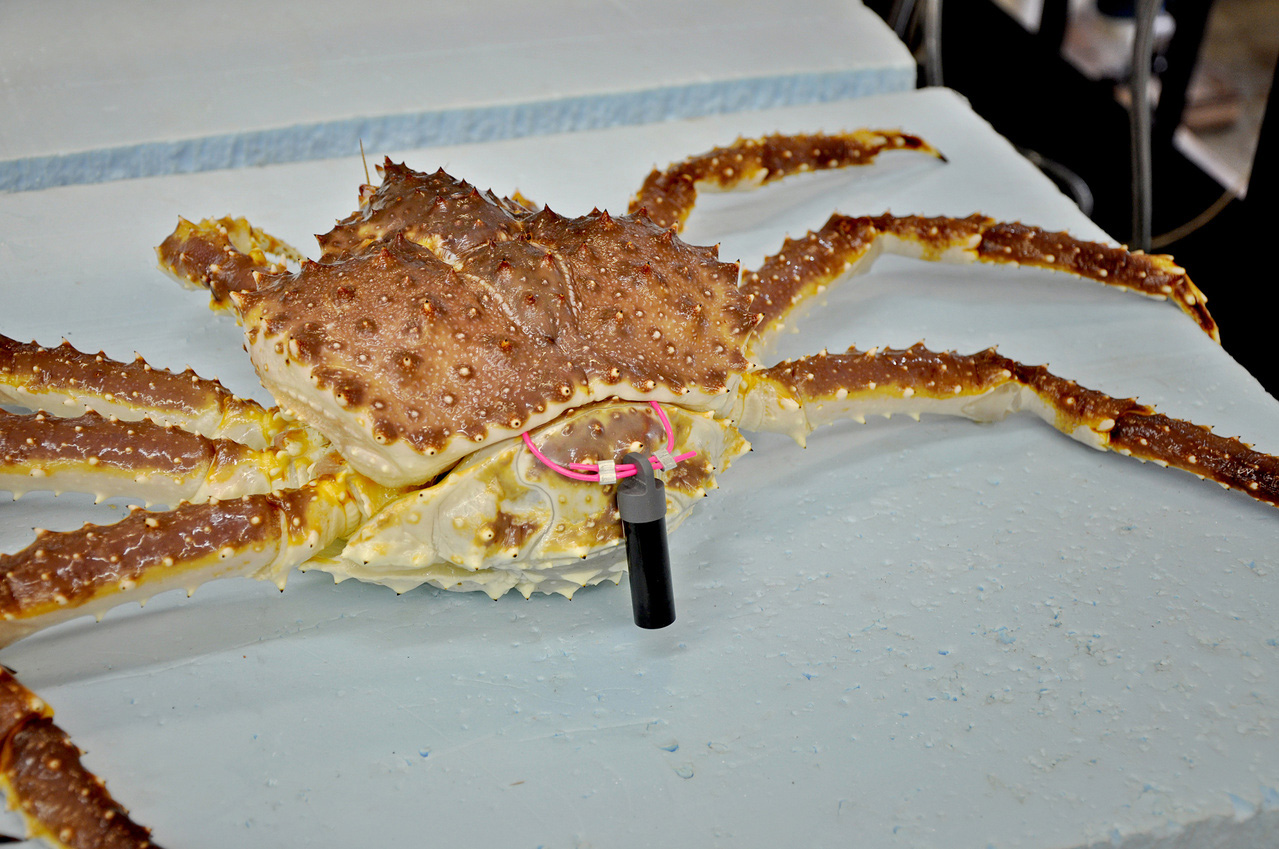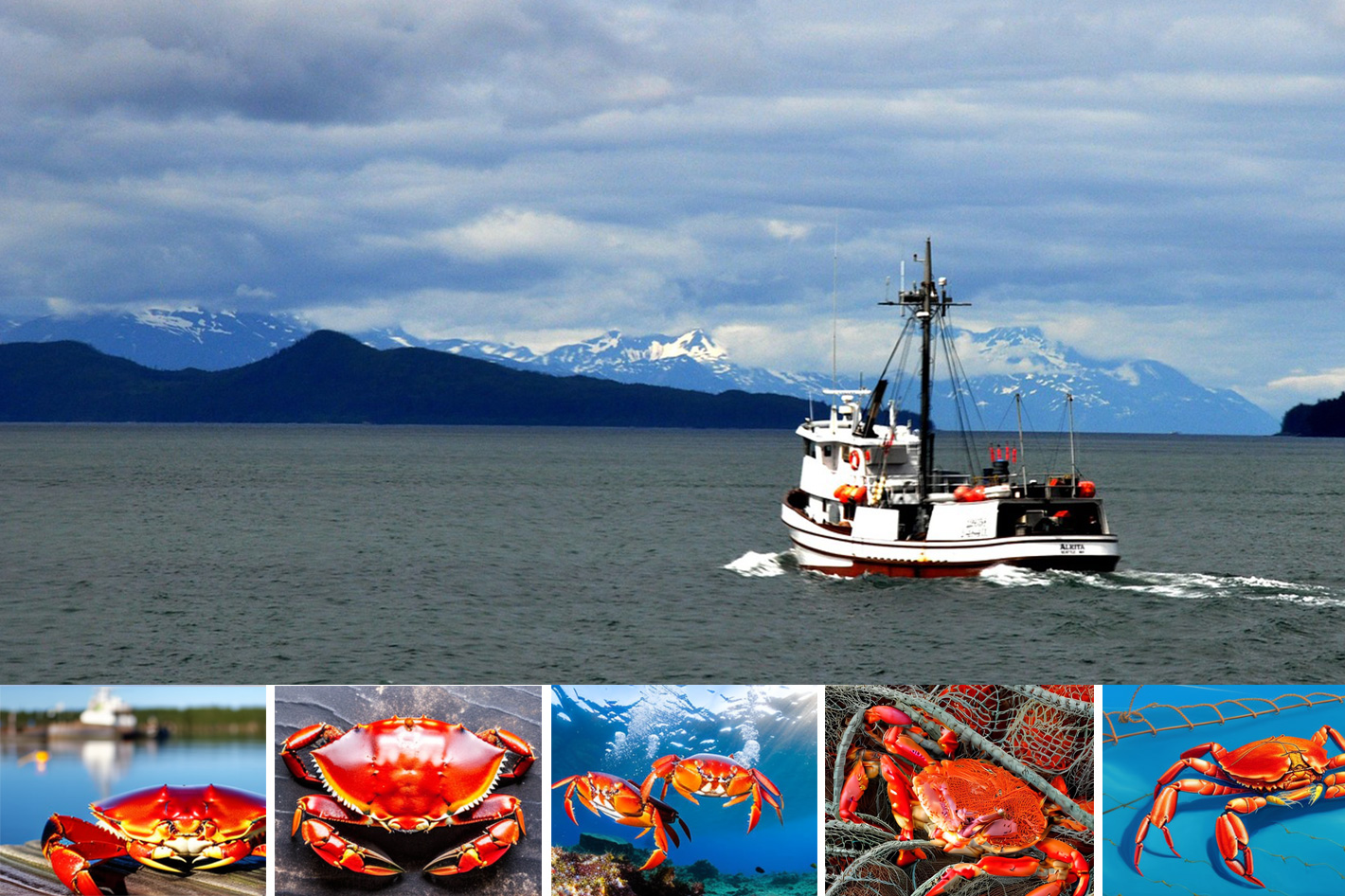It’s not always easy to get fisherman and scientists to agree, but crabbers in Alaska are helping in a cooperative research to meet a critical need for winter data on Bristol Bay red king crab.
Set to launch in March, the one-month long field research will gather data that will help the North Pacific Fishery Management Council define their management decisions. NOAA Fisheries announced the project, that involves its Alaska Fisheries Science Center and the Alaska Department of Fish and Game and has the cooperation from the Bering Sea crab industry.
So this winter crab fishermen are collaborating with scientists to make it possible to have the vital information available, providing their vessels and expertise in a cooperative research effort to answer key questions for management.
This helps the scientific community, as the inclement weather and icy seas make winter research on Bristol Bay red king crab challenging. There is also other good news, and it’s for the crab: they all will be returned to sea alive after sampling.
Bristol Bay red king crab is the largest U.S. stock and has been among the most valuable U.S. fisheries. However, the stock has gradually diminished over the past 15 years. The decline, says NOAA Fisheries, is part of a broader trend in red king crab populations across Alaska.
It is driven by failure of the stock to produce enough young, but the reason remains unknown. Reduced numbers of female Bristol Bay red king crab led to closure of the fishery under State of Alaska harvest control rules in 2021 and 2022 for the first time since 1995.
Last October NOAA Fisheries indicated that “our best available science indicates that the crash of the Bering Sea snow crab stock leading to the fishery closure was related to the 2019 heat wave in the North Pacific. That heat wave as well as earlier heat waves have been attributed to climate change” and noted that “climate change will continue to present challenges to our understanding of marine ecosystems in Alaska and elsewhere but we have a robust management system that will allow us to adapt.”
As part of that adaptation, it was decided to launch the study now announced. According to NOAA Fisheries, “the cooperative study will provide a rapid research response to answer questions about winter distribution and movement. Late winter/spring is likely a vulnerable molting and mating period during the life of Bristol Bay red king crab.”

A unique research opportunity
“It’s an exciting chance to study this stock in winter,” said study lead Mike LItzow of the Alaska Fisheries Science Center. “That’s when people really interact with the stock— the Bristol Bay red king crab fishery and many other fisheries that potentially interact with crab take place in fall and winter. But because of the difficulty of working in the Bering Sea in winter, we don’t have great data then. This is a great opportunity to fill that data gap.”
The closure of the fishery under State of Alaska harvest control rules in 2021 and 2022 means that crabbers have gone through a difficult time in terms of work, so the industry proposed a unique research opportunity: their boats and experience will help the scientists accomplish a research that otherwise would not be viable or very difficult to implement.
"The Bering Sea crab industry is very encouraged to be working with NOAA Fisheries and Alaska Department of Fish and Game. The agencies hustled to get research going in short order to help address the dire situation the crab industry is currently in,” said Scott Goodman, Executive Director, Bering Sea Fisheries Research Foundation. “Both agencies are funding the project to prioritize urgent research that will help by getting some crab vessels and crew out on the water immediately to collect timely, important information. The project is also tackling some important pot gear work to refine options that would keep unwanted small crab out of pots, as lowering fishing impacts is a high priority for crabbers.”
Two crab boats and crew will launch from Dutch Harbor to begin research in March. The team will:
- Conduct a crab pot survey to map winter/spring Bristol Bay red king crab distributions in and outside of protected areas
- Attach satellite tags to about 100 mature male red king crabs to track their movements
- Test gear modifications and pot fishing methods to reduce discards by allowing non-legal crabs to exit pots
The data collected will expand understanding of seasonal changes in crab distribution during potentially sensitive crab life-history periods. This information can be used to assess existing protection measures to bolster population recovery.
“The research will provide information that could inform management decisions as early as this fall,” Goodman said. “Results from the gear work may also weigh into upcoming management decisions.”
“The project is gathering information to optimize chances for population recovery through habitat protections and bycatch reduction,” said co-lead Benjamin Daly, Research Coordinator, Alaska Department of Fish and Game, Westward Region. “Better understanding of winter spatial distributions and seasonal migrations is needed to evaluate the efficacy of area closures. And fishing gear testing will help reduce regulatory discards in the directed fishery.”
This is not the fist time that scientists and the fishing industry in Alaska cooperate. Back in 2019, NOAA Fisheries partnered with the fishermen-supported nonprofit Bering Sea Fisheries Research Foundation to track red king crab seasonal movements to provide data vital to keeping the Bristol Bay fishery sustainable in a changing climate.
Scientists worked with fishermen in June that year to tag crabs with acoustic devices that transmit an ID number and the bottom temperature. Tagging was timed right after the NOAA Fisheries summer survey so researchers would be able to target where crabs were most abundant. The team deploied a saildrone, equipped with an acoustic receiver, in October 2019 and again in April 2020 to relocate the tagged crabs.







